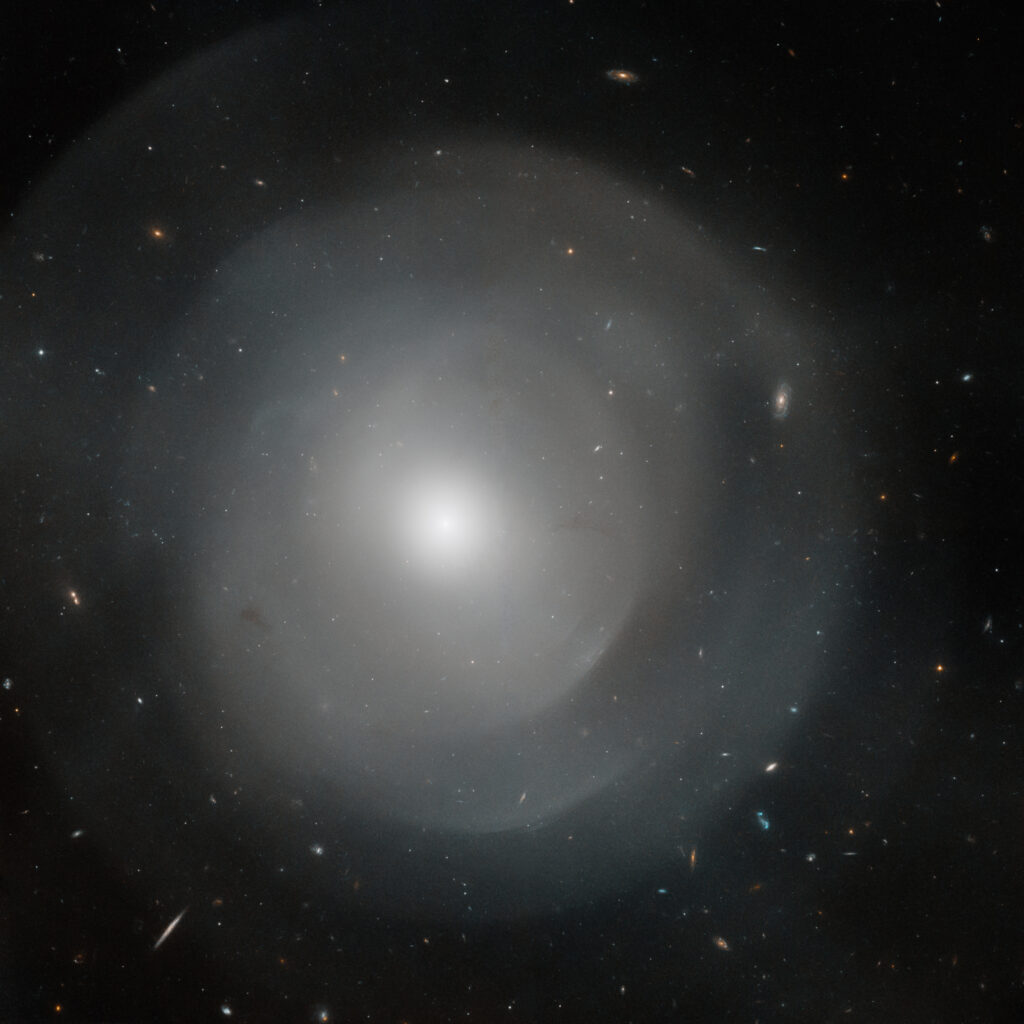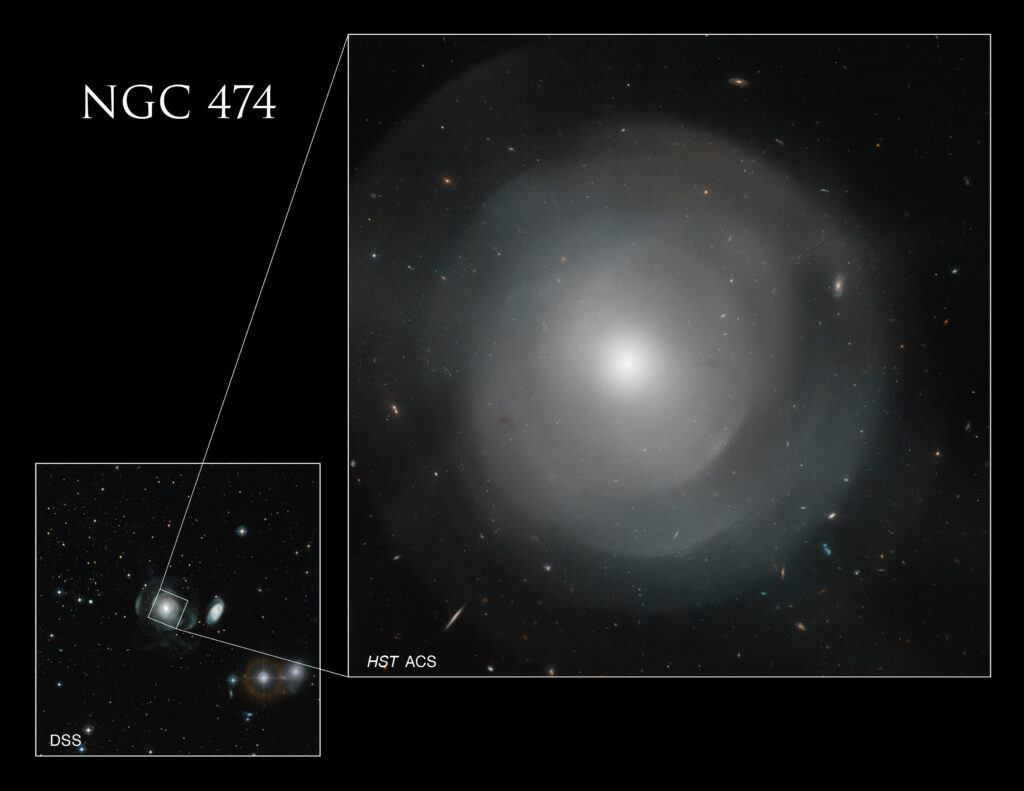NASA has published a stunning new image of a deep space object made by the Hubble telescope. This time it photographed the galaxy NGC 474. It is located at a distance of 100 million light-years from Earth in the constellation Pisces.

NGC 474 is an elliptical galaxy. Such objects have a spherical or ellipsoid shape and are characterized by the complete absence of any traces of spiral structures. Usually they do not have reserves of dust and gas that allow them to form new luminaries, so they are mostly inhabited by old stars.
The galaxy captured in the Hubble image has a diameter of 250 thousand light-years. This is 2.5 times the diameter of the Milky Way. Another distinctive feature of NGC 474 is the presence of a complex layered structure surrounding its main spherical component.

About 10% of elliptical galaxies have similar layered structures. According to the most common version, they are a kind of “circles on the water” — traces left as a result of the absorption of smaller galaxies. Indirect evidence of this is that usually “layered” galaxies are located in relatively empty corners of the Universe. Perhaps they simply “ate” all their close neighbors.
The portrait of NGC 474 was compiled based on data collected by the ACS, WFC2 and WFC3 cameras. The blue color corresponds to visible light, the orange color corresponds to the near infrared range.
Recall that Hubbble recently photographed a galaxy in the shape of a sombrero.
According to https://www.nasa.gov
Follow us on Twitter to get the most interesting space news in time
https://twitter.com/ust_magazine
